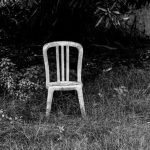When it comes to creating a vibrant and thriving garden in areas with varying levels of sunlight, understanding how to work with part sun and shade is essential. Part sun & shade small perennial gardens offer a unique opportunity to showcase a diverse range of plants that can thrive in these specific conditions. From delicate blooms that prefer filtered sunlight to lush foliage that thrives in the shadows, designing a garden in such areas requires careful consideration and planning.
Choosing the right plants for part sun & shade gardens is crucial to ensuring success. It’s important to understand the differences between part sun and shade, as certain plants may thrive better in one condition over the other.
By selecting plant varieties that are well-suited for these light conditions, you can create a beautiful and sustainable garden that will flourish year after year. With a thoughtful approach to plant selection, you can design a small perennial garden that is both visually appealing and ecologically balanced.
In this article, we will explore the nuances of part sun & shade gardening, from understanding the differences between these light conditions to selecting the right plants for your space. We will also provide tips on designing a small perennial garden in part sun & shade areas, as well as creative planting ideas and maintenance tips.
Whether you’re new to gardening or looking for fresh inspiration for your existing garden, incorporating hardscaping elements into your design can elevate the aesthetic appeal of your outdoor space while creating a harmonious balance between plant life and structural elements.
Understanding the Differences Between Part Sun & Shade
Part Sun and Shade gardens are popular choices for homeowners who have areas in their yard that receive varying amounts of sunlight throughout the day. Understanding the differences between these two lighting conditions is crucial for designing a successful garden. Part Sun refers to areas that receive approximately 4-6 hours of sunlight per day, while Shade areas only receive indirect or filtered sunlight.
When planning a garden in a Part Sun area, it is important to choose plants that thrive in these conditions. Plants that prefer Part Sun typically include varieties like Bleeding Hearts, Coral Bells, and Astilbe. On the other hand, Shade-loving plants such as Ferns, Hostas, and Hydrangeas are better suited for areas with limited direct sunlight.
Incorporating a mix of both Part Sun and Shade plants can create a visually appealing garden with different textures, colors, and heights. By understanding the differences between these lighting conditions and selecting the right plants accordingly, you can design a beautiful small perennial garden that flourishes in your specific environment.
| Part Sun Plants | Shade Plants |
|---|---|
| Bleeding Hearts | Ferns |
| Coral Bells | Hostas |
| Astilbe | Hydrangeas |
Selecting the Right Plants for Part Sun & Shade Gardens
Selecting the right plants for part sun and shade gardens is crucial to ensuring a successful and thriving garden. With the varying light conditions, it’s important to choose plants that can adapt and flourish in both situations. Here are some plant options to consider for your part sun and shade small perennial garden:
- Hostas: These versatile plants are known for their ability to thrive in both part sun and shade. With a wide range of varieties available, you can choose different sizes, shapes, and colors to add interest to your garden.
- Astilbe: These feathery flowers are perfect for adding texture and color to your part sun and shade garden. They prefer moist soil and can tolerate varying light conditions.
- Bleeding Heart: Known for their heart-shaped flowers in shades of pink and white, bleeding hearts do well in part sun and shade areas. They add a romantic touch to any garden.
In addition to these options, ferns, heucheras, and coral bells are also great choices for part sun and shade gardens. Be sure to consider the specific light requirements of each plant when selecting them for your garden.
When designing your small perennial garden in part sun and shade areas, consider planting taller plants towards the back where they can provide a backdrop for shorter plants in the front. This creates depth and visual interest in your garden. Grouping plants with similar light requirements together can also help ensure they receive the right amount of sunlight throughout the day.
Remember to regularly monitor the sunlight patterns in your garden to determine which areas receive more sun versus shade. This will help you make informed decisions when selecting and placing plants in your part sun and shade small perennial garden design. With careful planning and thoughtful selection of plants, you can create a beautiful and thriving garden that flourishes in varying light conditions.
Designing a Small Perennial Garden in Part Sun & Shade Areas
Designing a small perennial garden in areas with part sun and shade can be a rewarding endeavor that allows for a variety of plant choices to thrive. When planning the layout of your garden, it’s important to consider the amount of sunlight each area receives throughout the day. Part sun refers to areas that receive around 4-6 hours of sunlight, while part shade is characterized by receiving 2-4 hours of direct sunlight.
One key aspect to keep in mind when designing a small perennial garden in part sun and shade areas is selecting plants that are adaptable to these light conditions. Some popular choices for part sun areas include hostas, astilbes, and coral bells, while plants like ferns, impatiens, and begonias are well-suited for part shade locations. By mixing and matching these plants strategically, you can create visual interest and ensure that your garden thrives in its environment.
In addition to choosing the right plants, consider adding hardscaping elements such as pathways, borders, or decorative rocks to enhance the design of your small perennial garden. These elements not only provide structure and definition but also create a sense of cohesion within the space. By combining plants with hardscaping features thoughtfully, you can elevate the overall look of your garden and make it more inviting for both visitors and wildlife.
| Plant Type | Light Requirement |
|---|---|
| Hostas | Part Sun/part Shade |
| Astilbes | Part Sun |
| Coral Bells | Part Sun |
Creative Planting Ideas for Part Sun & Shade Gardens
Creating a captivating and thriving part sun & shade small perennial garden requires careful selection and placement of plants that can thrive in varying light conditions. Here are some creative planting ideas to help you design a beautiful and functional garden in areas with part sun & shade:
- Utilize foliage plants: Incorporating plants with interesting foliage can add texture and visual interest to your garden. Consider including ferns, hostas, or heuchera that can tolerate both part sun & shade conditions.
- Mix in flowering perennials: Select flowering perennials that bloom at different times of the year to ensure continuous color and interest in your garden. Plants like astilbe, coral bells, or bleeding hearts are great options for part sun & shade areas.
- Layer plantings: Create depth and dimension in your garden by layering plants of varying heights. Place taller plants towards the back of the garden bed and shorter ones towards the front to create a visually appealing landscape.
In addition to selecting the right mix of plants, consider incorporating elements like rocks, pathways, or containers to enhance the overall design of your part sun & shade small perennial garden. By combining different textures, colors, and plant varieties, you can create a dynamic and visually stunning outdoor space that will thrive year after year.
Remember to regularly monitor the light conditions in your garden throughout the day to ensure that all your plants receive adequate sunlight for optimal growth. With these creative planting ideas and thoughtful design choices, you can create a beautiful and functional part sun & shade small perennial garden that will delight you season after season.
Tips for Maintaining and Caring for Part Sun & Shade Perennial Gardens
Watering
One of the key aspects of maintaining a healthy part sun & shade perennial garden is proper watering. Since part sun areas may receive less direct sunlight, it is important to monitor soil moisture levels regularly. In these conditions, plants may not dry out as quickly as they would in full sun areas. On the other hand, shade areas may retain more moisture and require less frequent watering. Finding the right balance is crucial for the well-being of your plants.
Pruning and Deadheading
Regular pruning and deadheading are essential tasks to keep your part sun & shade perennial garden looking tidy and encourage new growth. Remove any dead or diseased foliage to prevent the spread of diseases and pests. Deadheading spent flowers will not only promote continuous blooming but also redirect energy back into the plant for healthier growth. Prune back overgrown or leggy plants to maintain a neat appearance in your garden.
Fertilizing
Proper fertilization is another key aspect of caring for part sun & shade perennial gardens. Select a balanced fertilizer specifically formulated for flowering plants to provide essential nutrients for healthy growth and vibrant blooms.
However, be cautious not to over-fertilize as it can lead to excessive leaf growth at the expense of flowers. Follow the manufacturer’s instructions on the fertilizer packaging or consult with a local gardening expert for recommendations tailored to your specific plant varieties in different light conditions.
Incorporating Hardscaping Elements Into Part Sun & Shade Gardens
Incorporating hardscaping elements into part sun and shade gardens can elevate the overall design and functionality of your outdoor space. These elements not only provide structure and definition to the garden but also offer opportunities for adding texture, color, and visual interest. When carefully integrated with the plantings, hardscaping elements can create a cohesive and balanced landscape that is both visually appealing and practical.
Choosing the Right Hardscaping Elements
When selecting hardscaping elements for your part sun and shade garden, it’s essential to consider the overall style of your space, as well as the specific needs of the plants you have chosen. Some popular choices for hardscaping elements include pathways, patios, retaining walls, edging, arbors, and trellises. These features can help define different areas within the garden while providing support for climbing plants or creating focal points.
Integrating Hardscaping With Plantings
To create a harmonious design in your part sun and shade garden, it’s important to seamlessly integrate hardscaping elements with plantings. For example, you can use a combination of rock or gravel pathways lined with low-growing plants to soften the edges and add a natural feel.
Retaining walls can be planted with creeping vines or cascading flowers to blend them into the landscape. By incorporating hardscaping in strategic locations throughout the garden, you can create visual interest while also enhancing functionality.
Maintaining Hardscaping Elements
Regular maintenance is key to ensuring that your hardscaping elements remain in good condition and continue to enhance your part sun and shade garden. This may include cleaning pathways, sealing pavers or stones, trimming plants near structures, and repairing any damage that may occur over time. By investing time in maintaining your hardscape features, you can ensure that they continue to complement your plantings and contribute to the overall beauty of your garden.
Inspirational Part Sun & Shade Small Perennial Gardens Designs & Examples
In conclusion, designing small perennial gardens in part sun and shade areas can be a rewarding and enjoyable project for any gardener. By understanding the differences between these light conditions and selecting the right plants that thrive in such environments, you can create a beautiful and vibrant garden space. Incorporating hardscaping elements like pathways, borders, and decorative structures can further enhance the overall design of your garden.
When it comes to creative planting ideas for part sun and shade gardens, consider mixing different plant heights, textures, and colors to create visual interest. Grouping together plants with similar watering and soil requirements can also help simplify maintenance tasks. Additionally, don’t be afraid to experiment with unique combinations of annuals, perennials, and flowering bulbs to add seasonal variety to your garden throughout the year.
As you embark on maintaining and caring for your part sun and shade perennial garden, make sure to regularly water, fertilize, and prune as needed to keep your plants healthy. Consider mulching around the base of your plants to retain moisture and suppress weeds.
And remember that gardening is a continuous learning process – don’t hesitate to try new techniques or plant varieties to keep your garden evolving over time. With dedication and creativity, your part sun & shade small perennial garden will surely become a cherished oasis in your outdoor space.
Frequently Asked Questions
What Is the Longest Blooming Perennial for Shade?
One of the longest blooming perennials for shade is the Astilbe. Its feathery plumes of flowers can last for weeks, providing a beautiful burst of color in shady areas. They are relatively low maintenance and come in a variety of hues, making them a popular choice for shaded gardens.
How Do You Plan a Small Flower Garden Layout?
Planning a small flower garden layout involves considering factors such as sunlight exposure, soil quality, and plant size. Start by mapping out your space and choosing a focal point plant.
Arrange plants based on their height, with taller ones at the back and shorter ones in front. Don’t forget to leave enough space between plants for growth and consider incorporating different textures and colors for visual interest.
Which Perennials Grow Best in Shade?
Several perennials thrive in shaded areas, including Hostas, Ferns, Bleeding Hearts, Coral Bells (Heuchera), and Lungwort (Pulmonaria). These plants are known for their ability to flourish without much direct sunlight and can add dimension and beauty to any shade garden. Be sure to choose varieties that are well-suited to the specific light conditions of your garden.

Welcome to my gardening blog! I am passionate about plants and enjoy sharing my knowledge and experiences with others. In this blog, I will write about everything related to gardening, from tips on how to get started to updates on my own garden projects.





